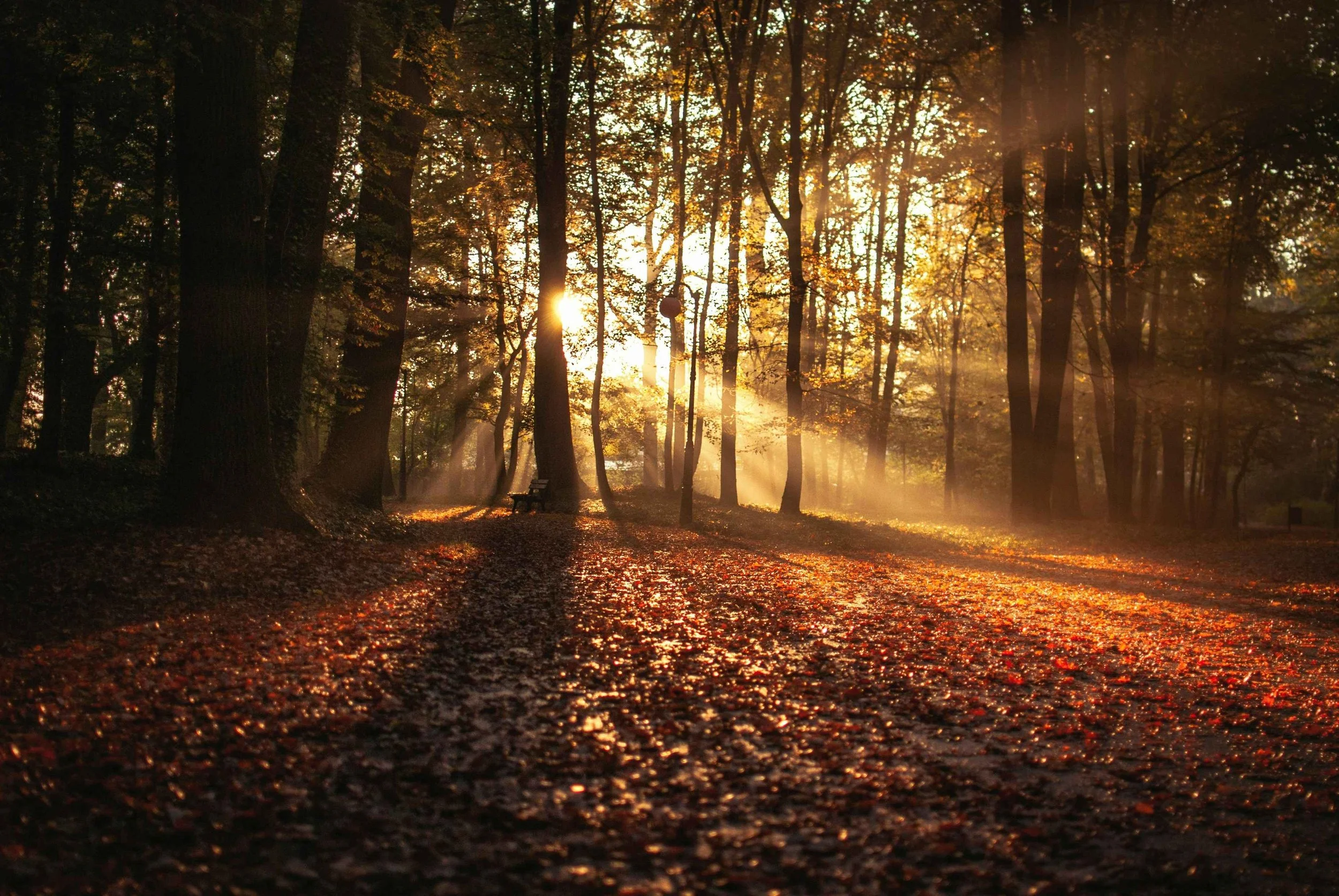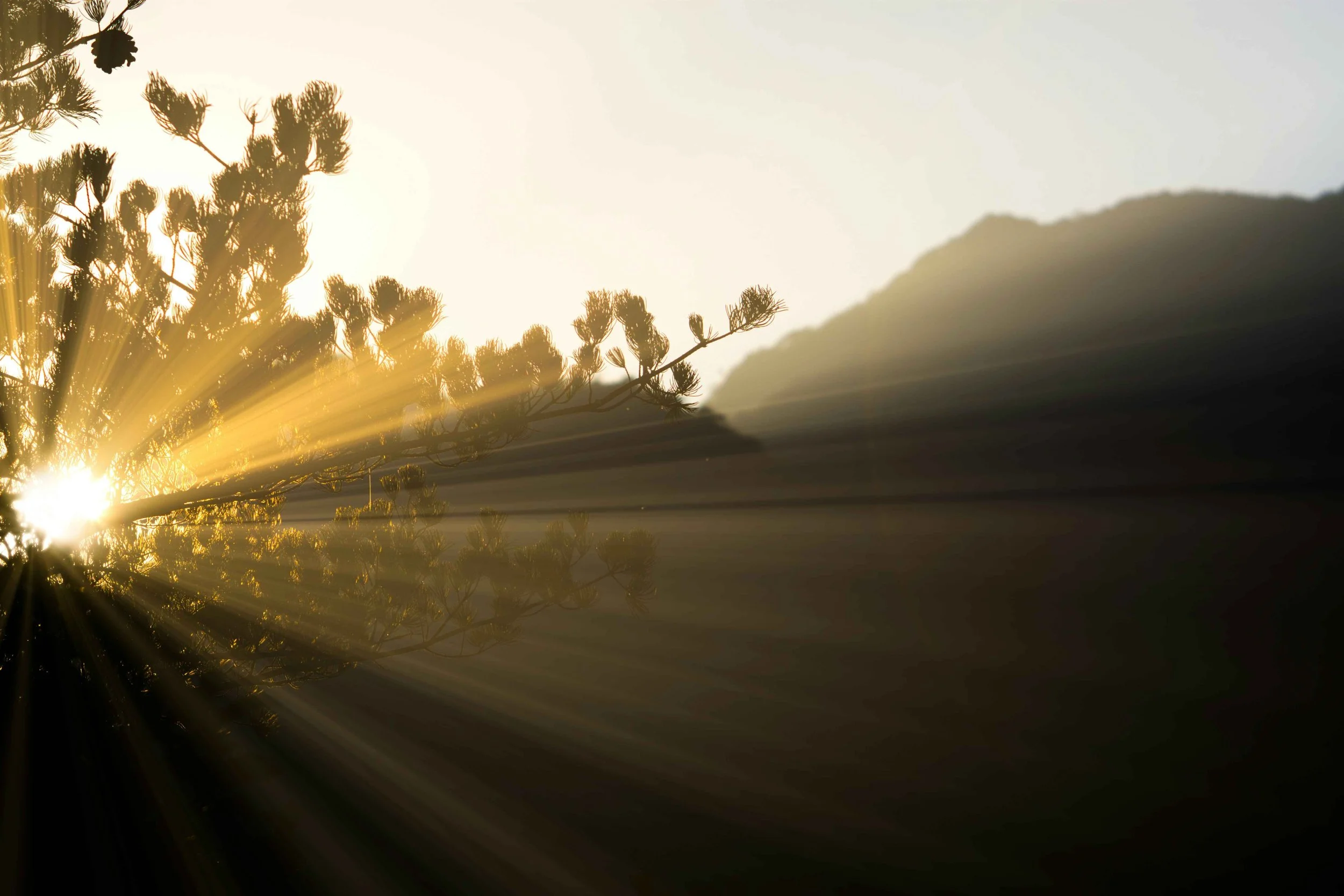Letting Go, Trusting Change, and Inviting Hope
As we move through the Fall Equinox – a time of balance between light and dark – I invite you to welcome an inner shift alongside the outer one: a shift from fear toward hope.
The changing seasons offer us a living reminder of what it means to release, recalibrate, and return to balance. Nature is always teaching us, reflecting our own cycles of growth, loss, and renewal – but we have to be willing to look and listen.
This fall, I’ve been asking myself: What if change isn’t something to fear, but something to feel hopeful about?
The Illusion of Certainty
We are conditioned to fear change and uncertainty, and to crave control and predictability. To only feel safe when we think we know what’s going to happen.
And in the modern world, there’s no shortage of things to feel fearful of: the climate crisis, political unrest, social injustice, and the sense that the world itself is on shaky ground.
Even while holding all of this, what would it look like to find a sense of acceptance in the not-knowing?
The truth is, certainty about the future has its limitations – something the universe loves to remind us of at the most unexpected of times.
Yet, uncertainty can also be fertile ground for hope. It invites us to trust in what’s unfolding.
Letting Go and Trusting the Cycle
Just as trees shed their leaves in the fall, we too are invited to release what is no longer serving us and turn inward.
Nature doesn’t judge change or loss as bad – it simply trusts the process. The tree doesn’t cling to its leaves in fear; it knows that letting go makes space for new growth. The fallen leaves enrich the soil and feed the roots below.
Nature shows us that we don’t have to rush – and that when we are patient, we can move through the darkness with faith that light is on the other side.
The trust and patience we see in nature can act as a spiritual and emotional teacher. Can we surrender to the natural cycles of our lives? Can we allow endings – knowing that they are necessary for our evolution and growth?
Letting go, then, becomes our first act of hope.
Hope as an Active Practice
Hope during difficult times doesn’t mean having blind optimism or ignoring the suffering and destruction around us. It can mean having a grounded, embodied openness to possibility.
So while change can be uncomfortable and at times scary, it can be made smoother with the addition of hope. Rather than seeing hope as a destination to get to, I invite you to view it as a companion during moments of transition.
The next time you’re feeling uncertain or don’t know how something will turn out, ask yourself:
What if it could be better than I’m expecting?
By entertaining the possibility that things can get better – better than you imagined – you begin to shift something internally. You might notice yourself becoming more curious instead of defensive, more present instead of preoccupied.
Maybe you start to listen more deeply to yourself, others, and what life might be offering you. Decisions feel less driven by urgency and more by alignment, and small moments of connection and beauty begin to stand out again.
In fact, research shows that hope is directly correlated with greater physical and mental well-being and life satisfaction. Hope also inspires change on the level of the community, promoting collective action on societal and environmental issues, higher tolerance, and conflict resolution.
People who nurture hope are more engaged, compassionate, and motivated to contribute to the collective good.
Practical Ways to Invite in Hope and Trust Through Change
So, how do you put all of this into practice? Here are seven practical ways to invite in more hope and trust during times of change.
Spend time outside: Notice nature’s transitions and its slow and patient transformation. Reflect on the lessons she is teaching you and how you can mirror nature in your approach to change in your own life.
Create a letting-go ritual: Write down everything you’re releasing right now – whether thought patterns, habits, behaviors, relationships – and create a ritual where you burn or bury the piece of paper. Send it off with a prayer of gratitude for everything it taught you.
Ground in sensory awareness during big emotions: When the unknown feels overwhelming, come back to the present moment and the body. Breathe deeply, notice colors, sounds, and textures. Let your senses anchor you in the present.
Journal on hope: Write down the things you feel hopeful about in your life and the world, and explore how moments of change could turn out better than you imagined.
Connect with community: Share fears and hopes in safe spaces with others – these could be therapy groups, women’s or men’s circles, psychedelic integration circles, or intentional gatherings with people from your community.
Practice patience: Notice where you are bringing unnecessary urgency into your day, and practice slowing down where you might be used to rushing. Remind yourself that change takes time, and to enjoy the process of whatever’s shifting inside or outside of you.
Honor cycles: Whatever is changing in your life, remember that every ending carries the seed of a new beginning. The beauty and growth that are on the other side of a perceived loss or missed opportunity are often bigger than what we could have imagined.
Hope as Light in the Dark
As we step into darker, more introspective months here in the Northern Hemisphere, remember: this time is essential for renewal. Darkness is not the absence of life but the soil where new growth begins.
Hope doesn’t erase uncertainty. But it can help us navigate it with a deeper sense of trust, wholeness, and acceptance within ourselves.
If you’re going through change, Reflective Healing offers spaces to explore transitions with curiosity and compassion. Get in touch with us today and start your therapy journey.


